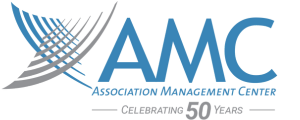
Huddle Up
Do you have a team huddle, stand-up, or touch-base? If yes, this blog might be a good place to find ideas to spice up your current structure. Even if you already have a successful team meeting, keep reading to see more ways a quick, regularly occurring meeting could benefit your organization or team.
Why consider a scheduled, recurring team meeting?
Team meetings, or huddles, can help keep staff informed about relevant business updates and build trust, awareness, and empathy among coworkers. When considering implementing a recurring team meeting, keep in mind this is a chance to keep your staff up to date on upcoming projects, allow them to share status reports on their own work, and acknowledge accomplishments in a succinct, quick manner.
There can be a lot of moving parts during day-to-day operations, from multiple client meetings and staff work schedules to short- and long-term project planning. Often, there can be a feeling of needing to always be “on” and productive. Taking 5 to 15 minutes of time to bring your team together might seem to conflict with that need, but it can spark collaboration and creative solutions within your department that might have otherwise been missed!
What type of meeting would work best for my team?
Regardless of the exact format of the team meeting, make sure the topics are clear and concise. It is the team leader’s role to define how the meeting will run and lead by example. Whatever type of meeting location you chose—sitting at a round table, standing in a small office, meeting in a large room—make it efficient and be aware of your body language. If everyone is standing in a circle, stand with them. If you want your team members to feel heard, open your body language (no crossed legs or arms) and face the person who is talking with both feet pointed towards them. This also will encourage others to engage in active listening.
According to LinkedIn Learning, there are 4 types of meetings you can base team meetings on: communication (company updates), monetary progress (dashboard review), team check-in (project status reports), and problem-solving.
I find the best recurring meetings are a combination of all 4, but a quick meeting dedicated to any of those topics can drive progress if you and your team are honest about your needs and communicate openly.
Establish meeting rules
After you select the focus or topic of your team meeting type, establish ground rules. The meetings should include all department or team staff and occur at regular intervals. Maybe once a week every Monday morning at 9 am is best for your team, or maybe 3 times a week at 3:30 pm is better. After you select a time, set a clear objective or agenda to include in the calendar appointment. It can be as simple as letting your staff know that you will spend 2 minutes on project updates, 2 minutes on what to expect in the upcoming week, and 2 minutes of open problem solving. Any topic lasting longer than 2 minutes should be resolved outside of the meeting, with only the relevant parties included.
Get that meeting started!
Being consistent with the time and structure of the meeting will allow for the most productivity. Make sure the entire team is there, and actively encourage participation. The goal is to remove barriers and unify your team to promote collaboration.
A sample agenda for the meeting may look something like this:
- The team leader greets everyone, shares any announcements, and discusses a quick list of goals that need to be accomplished.
- The leader acknowledges any team member whose contributions have stood out.
- Each team member shares a quick update about what they are working on.
- The leader opens the floor for team members to ask for help, input, or clarification of any project on their list.
- The leader thanks everyone for their time and concludes the meeting.
Remember, this schedule is an example. You know your team best and what works for one team might not work for others. However, every meeting should focus open communication and sharing to build trust and productivity.
Team Meeting “Do’s”
Starting this new routine might feel stiff or uncomfortable because it is different than the usual work day. Test a few formats to see what works best for your team and watch trust build and the quality of your team’s work grow. The important thing to remember is nothing is set in stone. Do you have a smaller team? Maybe 5 minutes is enough. Do you like to go into slightly more detail about current projects or updates? Try 15 minutes to start. You can always adjust.
Some questions to ask yourself to determine where to start, or what to include in this meeting are
- How often should the team meeting take place? At what time?
- What topics should we include that are most important to the staff?
- What sort of successes has the team had this week?
- Does the staff need help with anything?
- Is there room to ask questions about new projects, plans, initiatives, policies, etc.?
- Consider having staff share progress updates on projects so coworkers can see how everyone is contributing. This can create a sense of unity when everyone sees how they fit into the team’s goal.
Recurring meetings not only help you and your team be aware of the many moving parts of all the projects going on, but they can help team members feel like they are contributing to the goals of the organization when they can see the big picture of where they fit in in the process. The main goal is to make the team as efficient and cohesive as possible. Use these meetings as a tool to get everyone on the same page and provide them the opportunity to give input. A team that huddles together, works better together. Go Team!
Heather Comiskey is a content marketing associate at AMC.
Be the first to know about the latest articles, news, and events from AMC. Sign up for our emails!


